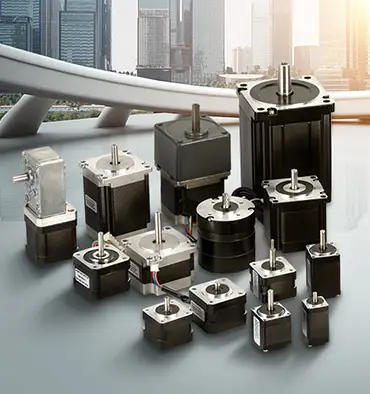How to calculate the speed of a stepper motor?
Stepper motors are electric motors that are designed to rotate in precise increments, or steps, rather than continuously. These motors are widely used in a variety of applications, including CNC routers, 3D printers, and other precision machines. The speed of a stepper motor is an important factor that determines its performance in a particular application. In this article, we will explore how to calculate the speed of a stepper motor and explain the factors that affect the speed of these motors.
Factors that Affect the Speed of a Stepper Motor
There are several factors that can affect the speed of a stepper motor. These factors include:
-
Supply voltage: The supply voltage of a stepper motor is an important factor that determines its speed. Increasing the supply voltage will typically increase the speed of the motor. However, it is important to note that increasing the supply voltage may also increase the torque of the motor, which may not be desirable in some applications.
-
Step angle: The step angle of a stepper motor is the angle through which the rotor rotates in response to a single step command. The smaller the step angle, the more precise the motor will be, but it will also operate at a slower speed. Conversely, the larger the step angle, the faster the motor will operate, but it will be less precise.
-
Load: The load on a stepper motor can have a significant impact on its speed. By optimizing the load on the motor, it is possible to increase the speed of the motor. For example, decreasing the mass of the load or using a pulley system to reduce the load on the motor can help to increase its speed.
-
Microstepping: Microstepping is a technique that is used to control the rotation of a stepper motor's rotor in precise steps. By using microstepping, it is possible to increase the precision of the motor, but it will also operate at a slower speed.
How to Calculate the Speed of a Stepper Motor
To calculate the speed of a stepper motor, you will need to know the following information:
- Supply voltage
- Step angle
- Load
- Microstepping
Using this information, you can use the following formula to calculate the speed of a stepper motor:
Speed (RPM) = (Supply voltage * Microstepping) / (Step angle * Load)
For example, if a stepper motor has a
Speed (RPM) = (12V * 1/8) / (1.8 degrees * 0.5 Nm)
= (1.5V) / (0.9 degrees * 0.5 Nm)
= 1.67 RPM
In this example, the speed of the stepper motor would be 1.67 RPM.
It is important to note that this formula is a rough estimate of the speed of a stepper motor and may not be accurate in all cases. Other factors, such as the type of stepper motor and the controller being used, can also affect the speed of the motor.
In conclusion, the speed of a stepper motor is determined by a variety of factors, including the supply voltage, step angle, load, and microstepping. By understanding these factors and using the appropriate formula, it is possible to calculate the speed of a stepper motor and determine its performance in a particular application.


Leave a Reply